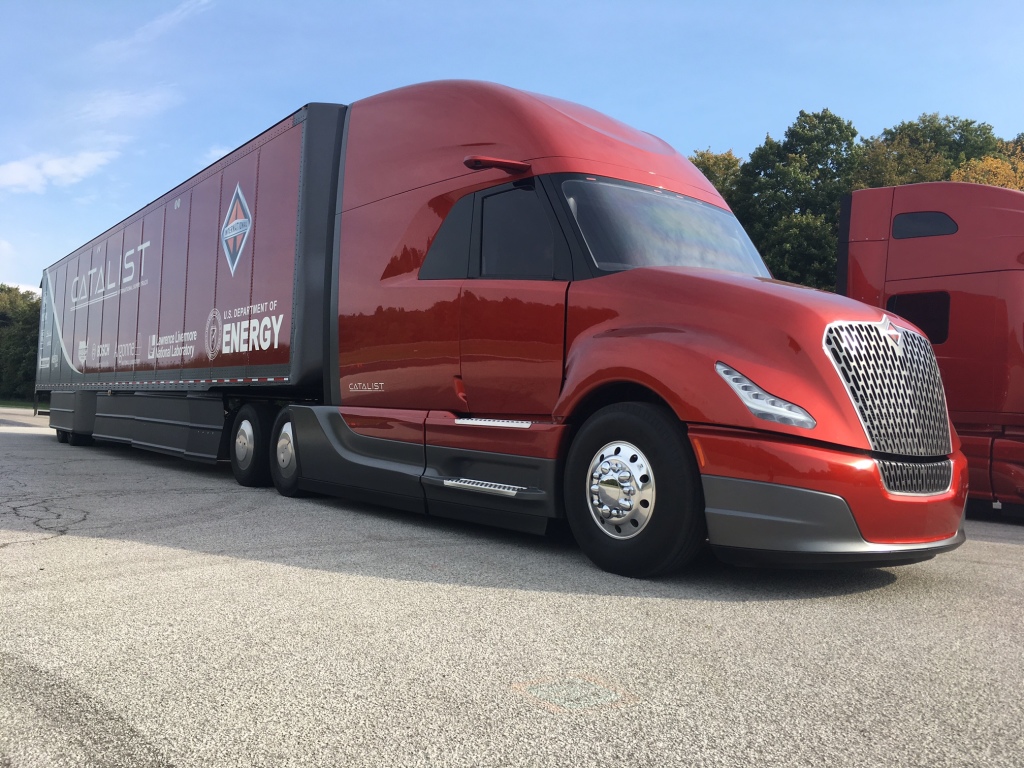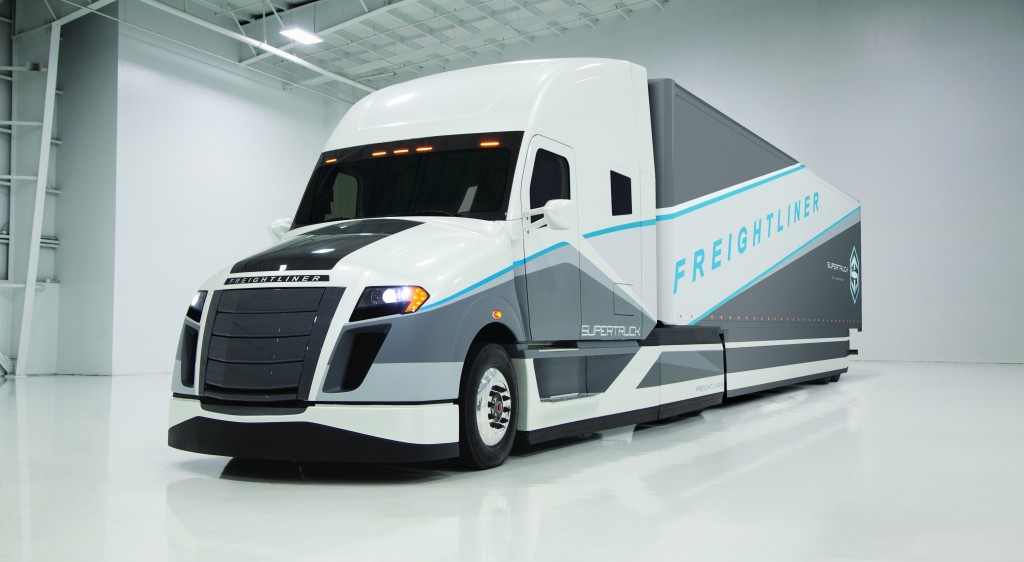Funding announced for SuperTruck 3 project
The U.S. Department of Energy has announced another US$100 million in funding for a third SuperTruck project.
This time the project will be broadened to include both medium- and heavy-duty trucks, and will be focused on electrifying trucking. U.S. Secretary of Energy Jennifer Granholm announced the funding during a webinar this morning with the North American Council for Freight Efficiency (NACFE).
“Getting to net-zero carbon emissions by 2050 means we must aggressively cut down the largest source of emissions: the transportation sector,” said Granholm. “DOE’s first two SuperTruck initiatives led the biggest truck makers in the American semi market to take massive leaps in fuel efficiency. This new funding triples down on that progress with a push towards electrifying trucks of all sizes, along with efforts to expand EV charging access and develop low-emission car engines.”

The initial SuperTruck project, launched in 2009, saw OEMs improve heavy-duty truck freight efficiency by 50%, while SuperTruck 2 projects are on pace to more than double miles per gallon. SuperTruck 2 funding recipients included Daimler, Volvo, Cummins/Peterbilt, and Navistar.
The next round will be spread over four years, and is expected to help advance all-electric, plug-in hybrid systems using renewable biofuels, and hydrogen fuel cell technologies. Granholm said the latest SuperTruck project comes at an “exciting and urgent” time.
“It’s exciting, because there is so much opportunity to claim America’s share of the global clean energy market, which means creating millions of jobs,” she said. “And it’s urgent, because we can’t delay waging a full-out war on the climate crisis, and the transportation sector is one of the key fields of battle.”
She also said the program will for the first time look beyond Class 8 trucks.

“We want all kinds of trucks. Garbage trucks, delivery trucks being used to drop packages at your home, tow trucks you call in an emergency – any medium- or heavy-duty truck on the road, we want them to run on alternative or cleaner energy,” she said.
Two truck drivers who have benefited from the technologies developed under previous SuperTruck programs were also on the call. Joel Morrow, test driver and trainer at Ploger Transportation, raved about how solar-powered APUs have led to better rest, and less pollution.
“It works very well and it’s very quiet,” he said. “Some alternatives we used in the past had a diesel-powered motor to run the AC system while parked, or we idled the main engine. This eliminates that.”
He also noted downspeeding is a concept that was perfected during SuperTruck projects.
“Because of projects like SuperTruck, we’re starting to see productivity and efficiency walk hand in hand, and that is a great thing for the driver,” Morrow said.
He also noted small fleets and owner-operators benefit from the product validation that occurs as part of the program, before those technologies are brought to market.
“Validating that the technologies are ready for the real world is super important,” he said. “Early on, we had emissions systems on the trucks that didn’t have that validation and a lot of smaller fleets and owner-operators took it on the chin out in the field. It’s so important for programs like SuperTruck and NACFE to validate these technologies so we have the confidence that once we have them out here, they’re ready for the real world and we won’t have to back-engineer things.”
Morrow noted small fleets and independent operators compete on efficiency, while larger fleets have the benefit of scale, making it essential that their technological adoptions perform as expected.
Clark Lee, a driver with Nussbaum, agreed on the importance of “getting this stuff out in the field and making sure it works so when it does come up to scale the average owner-operator that has one or two trucks knows the technology is going to work, it’s going to save him money and it’s going to save the environment.”
NACFE executive director Mike Roeth welcomed the focus on battery-electric and hydrogen fuel cell technologies, as those are the likeliest long-term winners.
“At the end of the day, we think battery-electric and hydrogen fuel cell will be the predominant ones as we enter into the 2040-2050 [timeline for] carbon-free transportation,” Roeth said.
Kelly Speakes-Backman, Principal Deputy Assistant Secretary at the U.S. DOE, said the current administration will also be funding the deployment of electric vehicle charging infrastructure. A separate announcement made along with the SuperTruck 3 program was geared toward getting EV chargers installed in apartment buildings and other areas where electric passenger vehicles are likely to be deployed.
“You’re going to hear from this administration and the DOE about deployment, deployment, deployment. We’re ready to move on this,” she said, adding U.S. President Joe Biden has announced plans to roll out 500,000 electric vehicle chargers across the U.S. by 2030.
Have your say
This is a moderated forum. Comments will no longer be published unless they are accompanied by a first and last name and a verifiable email address. (Today's Trucking will not publish or share the email address.) Profane language and content deemed to be libelous, racist, or threatening in nature will not be published under any circumstances.